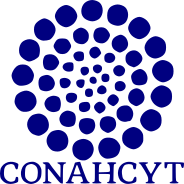Plant extracts for control of Colletotrichum gloeosporioides in vitro and flowering period and postharvest stage on Carica papaya.
Plant extracts for control of Colletotrichum gloeosporioides in vitro and blooming period and postharvest stage on Carica papaya
Keywords:
antracnosis, flores, frutos, hongos fitopatógenos, papaya, terpenoides.Abstract
The objective was to evaluate the activity of the extracts of six species for control in vitro on Colletotrichum gloeosporioides, and on papaya fruit (Carica papaya) during blooming period and postharvest stage. Evaluated variables were inhibition percentage and biological effectiveness for in vitro evaluation; incidence and biological effectiveness for field crop flowering stage evaluation and severity and effectiveness for postharvest fruits. Species’ extracts phytochemical analysis identified the presence of flavonoids in S. rostratum, and E. arvense; alkaloids in D. stramonium, M. parviflora, and A. ochroleuca; and terpenoids in P. icosandra. P. icosandra methanolic extract shown greater in vitro biological effectiveness against C. gloeosporioides fungus from remaining species, it was the only one evaluated during blooming period and postharvest stage, and was observed in blooming stage with a 60-70 % effectiveness, where the flowers showed necrosis and rot (typical symptoms of the disease) and 71.4 % in the control of anthracnose in postharvest fruits.
References
Ángeles, M. O., García, M. M. R., Rodríguez, P. E., & Soto, H. M. (2011). Toxicidad de extractos vegetales para el control de Trialeurodes vaporariorum w. (hom. optera: Aleyroidae) en laboratorio y en cultivo de tomate en invernadero). The Journal of Agricultural Science, 95, 117-132. https://www.researchgate.net/
Aniszewski, T. (2015). Alkaloids. Chemistry, biology, ecology and applications. Elservier. Netherlands. 2nd Edition. 496 p. https://www.elsevier.com/books/alkaloids/aniszewski/978-0-444-59433-4
Bailey, J. A., & Jeger, M. J. (1993). Colletotrichum: Biology, pathology and control. The Journal of Agricultural Science, 121(1), 136–137. https://doi.org/10.2307/3760628
Baños, G. P. E., Zavaleta, M. E., Colinas, L. M. T., Luna, R. I., & Gutiérrez, A. J. G. (2004). Control Biológico de Colletotrichum gloeosporioides [(Penz.) Penz. y Sacc.] en papaya Maradol Roja (Carica papaya L.) y fisiología postcosecha de frutos infectados. Revista Mexicana Fitotecnia, 22, 198-205.
Barile, E., Bonanomi, G., Antignani, V., Zolfaghari, B., Sajjadi, S. E., Scala, F., & Lanzotti, V. (2007). Saponins from Alliumm inutiflorum with antifungal activity. Phytochemistry, 68 (5), 596-603. https://doi.org/10.1016/j.phytochem.2006.10.009
Bautista, B. S., Barrera, N. L. L., Bravo, L. L., & Bermúdez, T. K. (2002). Antigunfal activity of leaf and stem extracts from various plant species on the incidence of Colletotrichum gloesporioides of papaya and mango fruit after storage. Revista Mexicana de Fitopatología, 20, 8-12.
Bogantes-Arias, A., & Mora-Newcomer, E. (2013). Incidencia y severidad de la antracnosis en líneas e híbridos de papaya (Carica papaya). Agronomía Mesoamericana, 24(2), 411-417.
Boumba, V. A., Mitselou, A., & Vougiouklakis, T. (2004). Fatal poisoning from ingestion of Datura stramonium seeds. Veterinary and Human Toxicology, 46(2), 81–2.
Brahmachari, G., Gorai, D., & Roy, R. (2013). Argemone mexicana: Chemical and pharmacological aspects. Brazilian Journal of Pharmacognosy, 23(3), 559-575. https://doi.org/10.1590/S0102-695X2013005000021
CABI (2016). Invasive Species Compendium. Wallingford, UK: CAB International. 10 -1-17. www.cabi.org/isc.
Chang, Y. C., Hsieh, P. W., Chang, F. R., Wu, R. R., Liaw C. C., Lee, K. H., & Wu, Y. C. (2003). Two new protopinesarge mexicaines A and B and the anti-HIV alkaloid 6-acetonyl dihydrochelerythrine from formasan Argemone mexicana. Planta Medica, 69, 148-152. https://doi.org/10.1055/s-2003-37710
De los Santos, F., Becerra, E. N., Mosqueda, R., Vasquez, A., & Vargas, A. B. (2000). Manual de Producción de Papaya en el Estado de Veracruz. Folleto Técnico No. 17. INIFAP-CIRGOC. Campo Experimental Cotaxtla. Veracruz, México. 87 p.
Doyle, J. J., & Doyle, J. L. (1990). Isolation of plant DNA from fresh tissue. Focus, 12, 13-15.
Farhan, H., Rammal, H., Hijazi, A., Hamad, H., Daher, A., Reda, M., & Badran, B. (2012). In vitro antioxidant activity of ethanolic and aqueous extracts from crude Malva parviflora L. grown in Lebanon. Asian Journal of Pharmaceutical and Clinical Research, 5, 234-238.
Fletcher, M. T., Takken, G., Blaney, B. J., & Alberts, V. (1993). Isoquinoline alkaloids and keto-fatty acids of Argemone ochroleuca and A. mexicana (mexican poppy) seed. I. An assay method and factors affecting their concentration. Australian Journal of Agricultural Research, 44, 265 – 275.
García, E. (2004). Modificaciones al Sistema de Clasificación Climática de Köppen. México. Instituto de Geografía Universidad Autónoma de México. México, D.F. 90 p.
García-Mateos, R., Soto, H. M., Zavala, C. F., & Kite, G. (2007). Quinolizidine alkaloids in Calia secundiflora (Fabaceae). Agrociencia, 41(2), 161–167.
García, M. R., Pérez, L. D., Miguel, C. S., Soto, H. M., Rodríguez, P. E., & Kite, G. (2008). Bactericidal and fungicidal activities of Calia secundiflora (Ort.)Yakovlev. Zeitschrift für Naturforschung C, 63(9-10), 653-657. https://doi.org/10.1515/znc-2008-9-1007
Guerrero, R. E., Solís, G, S., Hernández C, F. D., Flores, O. A., Sandoval L. V., & Jasso, C. D. (2007). Actividad biológica in vitro de extractos de Flourensia cernua DC en patógenos de postcosecha: Alternaria alternata (Fr.: Fr.) Keissl., Colletotrichum gloeosporioides (Penz.) Penz. y Sacc. y Penicilliu< digitatum (Pers.: Fr.) Sacc. Revista Mexicana de Fitopatología, 25(1), 48-53.
Gupta, V. K., Roy, A., Nigam, V. K., & Mukherjee, K. (2010). Anti-microbial activity of Spondias pinnata resin. Journal of Medicinal Plants Research, 4, 1656-61. Available in https://academicjournals.org/journal/JMPR/article-full-text-pdf/F3053C522029
Haiyan, L., Chen, Q., Yanli, Z., & Zhiwei, Z. (2005). Screening for endophytic fungi with antitumour and antifungal activities from Chinese medicinal plants. World Journal of Microbiology and Biotechnology, 21, 1515-1519. https://doi.org/10.1007/s11274-005-7381-4
Hernández, V. M. M., Borges, A. R., Rodriguez, V. R. I., Torres, A. J. F. J., Méndez, G. M., & Caceres, F. M. (2011). Ovicidal and larvicidal activity of the crude extracts from Phytolacca icosandra against Haemonchus contortus. Veterinary Parasitology, 179(1), 100-106. https://doi.org/10.1016/j.vetpar.2011.02.019
Hernández, M., Murace, M., Ringuelet, J., Petri, I., Gallo, D., & Arambarri, A. (2013). Effect of aqueous and alcohol Extracts of Phytolacca tetramera (Phytolaccaceae) leaves on Colletotrichum gloeosporioides (Ascomycota). Boletín de la Sociedad Argentina de Botánica, 48 (2), 201-209. https://doi.org/10.31055/1851.2372.v48.n2.6205
Ippolito, A., Schena, L., Pentimone, I., & Nigro, F. (2005).Control of postharvest rots of sweet cherries by pre- and postharvest applications of Aureobasidium pullulans in combination with calcium chloride or sodium bicarbonate. Postharvest Biology and Technology, 36(3), 245–252. https://doi.org/10.1016/j.postharvbio.2005.02.007
Leslie, J. F., & Summerell, B. A. (2008). The Fusarium Laboratory Manual. John Wiley & Sons. Blackwell. Manhattan. 387 p.
Mshvildadze, V., Favel, A., Delmas, F., Elias, R., Faure, R., Decanosidze, G., Kemertelidze, E., & Balansard, G. (2000). Antifungal and antiprotozoal activities of saponins from Hedera colchica. Pharmazie, 55, 325–326.
Mimica, D. N., Simin, N. C. J., Jovin, E., Orcic, D., & Bozin, B. (2008). Phenolic compounds in field horsetail (Equisetum arvense L.) as natural antioxidants. Crop and Pasture Science, 13, 1455–1464. https://doi.org/10.3390/molecules13071455
Omar, T., Noman, L., Mohamed1, B., Altuntas, F. O., & Demirtas, I. (2018). Phytochemical constituents and antioxidante effect of Solanum rostratum species from Argelia. Asian J Pharm Clin Res, 11 6, 219-223
Ong, M. K., & Ali, A. (2015). Antifungal action of ozone against Colletotrichum gloeosporioides and control of papaya anthracnose. Postharvest Biology and Technology, 100, 113–119. https://doi.org/10.1016/j.postharvbio.2014.09.023
Regnault, R. C., Philogene, B. J., Terrón, P. U., & Vincent, C. (2004). Biopesticidas de Origen Vegetal. Madrid España. Mundiprensa.
SAS, Institute. (2003). SAS/STAT. User´s Guide. Release 9.0 ed. SAS Institute Inc., Cary, North Carolina. USA.
Segal, R., & Schlösser, E. (1975). Role of glycosidases in the membranlytic, antifungal action of Saponins. Archives of Microbiology, 104, 147-150.
Sharma, M., & Kulshrestha, S. (2015). Colletotrichum gloeosporioides: An anthracnose causing pathogen of fruits and vegetables. Biosciences Biotechnology Research Asia, 12(2), 1233–1246. Available in: https://doi.org/10.13005/bbra/1776
Singh, S., Singh, A., Keshariwala, M., Singh, T. D., Singh, V. P., Pandey, V. B., & Singh, U. P. (2010). The mixture of tertiary and quaternary alkaloids isolated from Argemone ochroleuca inhibits spore germination of some fungi. Archives of Phytopathology and Plant Protection, 43, 1249-1253. https://doi.org/10.1080/03235400802404627
Solano, V., & Arauz, L. F. (1995). Combate de antracnosis en frutos de papaya mediante aplicaciones de fungicidas en el campo en la zona atlantica de costa rica. Agronomia Costarricense, 19(2), 25–30.
Tadeg, H., Mohammed, E., Asres, K., & Gebre, M. T. (2005). Antimicrobial activities of some selected traditional Ethiopian medicinal plants used in the treatment of skin disorders. Journal of Ethnopharmacology, 100, 168-175. https://doi.org/10.1016/j.jep.2005.02.031
Talhinhas, P., Sreenivasaprasad, S., Neves, M. J., & Oliveira, H. (2002).Genetic and morphological characterization of Colletotrichum acutatum causing anthracnose of Lupins. Phytopathology, 92(9), 986–996. https://doi.org/10.1094/PHYTO.2002.92.9.986.
Tapia-Tussell, R., Quijano-Ramayo, A., Cortes-Velázquez, A., Lappe, P., Larqué-Saavedra, A., & Pérez-Brito, D. (2008). PCR-based detection and characterization of the fungal pathogens Colletotrichum gloeosporioides and Colletotrichum capsici causing anthracnose in papaya (Carica papaya L.) in the Yucatán peninsula. Molecular Biotechnology, 40(3), 293- 298. https://doi.org/10.1007/s12033-008-9093-0.
Tatagiba, J., Liberato, J., Zambolim, L., Ventura, J., & Costa, H. (2002). Control y condiciones climáticas favorables a antracnosis de papaya. Fitopatología Brasileira, 27(2), 186-192.
Tavares, W. de S., Cruz, I., Petacci, F., de Assis Júnior, S. L., de Sousa Freitas, S., Zanuncio, J. C., & Serrão, J. E. (2009). Potential use of Asteraceae extracts to control Spodoptera frugiperda (Lepidoptera: Noctuidae) and selectivity to their parasitoids Trichogrammapretiosum (Hymenoptera: Trichogram matidae) and Telenomus remus (Hymenoptera: Scelionidae). Industrial Crops and Products, 30(3), 384–388. https://doi.org/10.1016/j.indcrop.2009.07.007
Townsend, G. R., & Heuberger, J. V. (1943). Methods for estimating osses caused by diseases in fungicide experiments. Plant Disease Report, 24, 340-343.
Treyvaud, V., Marston, A., Dyatmiko, W., & Hostettmann, K. (2000). Molluscicidal saponins from Phytolacca icosandra L. Phytochemistry, 55, 603-609. Available in: https://doi.org/10.1016/S0031-9422(00)00233-8
Usha, K., Singh, B., Praseetha, P., Deepa, N., Agarwal, D., K. Agarwal, R., & Nagaraja, A. (2009). Antifungal activity of Datura stramonium L.,Calotropis gigantea and Azadirachta indica against Fusarium mangiferae and floral malformation in mango. European Journal of Plant Pathology, 124 (49), 637-657. https://doi.org/10.1007/s10658-009-9450-2
Wagner, H., & Bladt, S. (1996). Plant Drug Analysis. A Thin Layer Chromatography Atlas. Springer Science & Business Media. Munchen. 384 p.
White, T. J., Bruns, T. D., Lee, S., & Taylor, J. (1990). Amplification and direct sequencing of fungal ribosomal genes form phylogenetics. In M. A. Innis, D. H. Gelfrand, , J. J Sninsky, & T. J. White, (Eds.). PCR protocols. Academic Press. San Diego, California, USA. pp. 315–322.
Wink, M. (1992). The role of quinolizidine alkaloids in plants insect interactions. Insect-Plant Interactions, 4, 131-166.
Wink M. (1993), Quinolizidine alkaloids. In: Phytochemistry and Agriculture. The Phythochemical Society of Europe, Oxford, pp 187-203.
Zhang, J. W., Li, S. K. B., &; Wu, W. J. (2009). The main chemical composition and in vitro antifungal activity of the essential oils of Ocimum basilicum Linn. var. pilosum (Willd.) Benth. Molecules, 14(1), 273–278. https://doi.org/10.3390/molecules14010273.
Downloads
Published
Issue
Section
License

Polibotánica by Departamento de Botánica de la Escuela Nacional de Ciencias Biológicas del Instituto Politécnico Nacional se distribuye bajo una Licencia Creative Commons Atribución-NoComercial-CompartirIgual 4.0 Internacional.




















